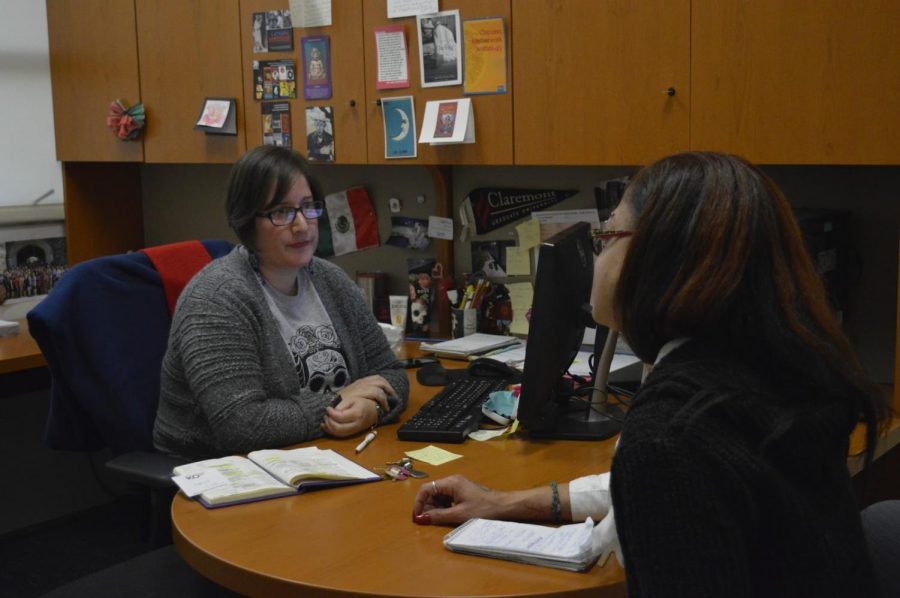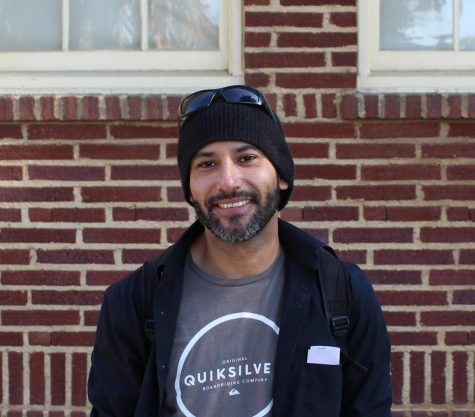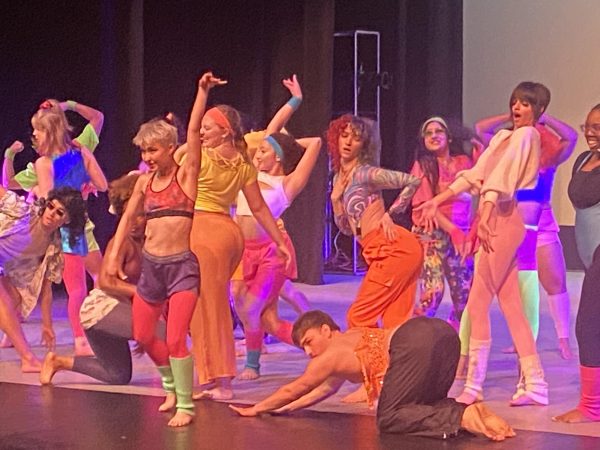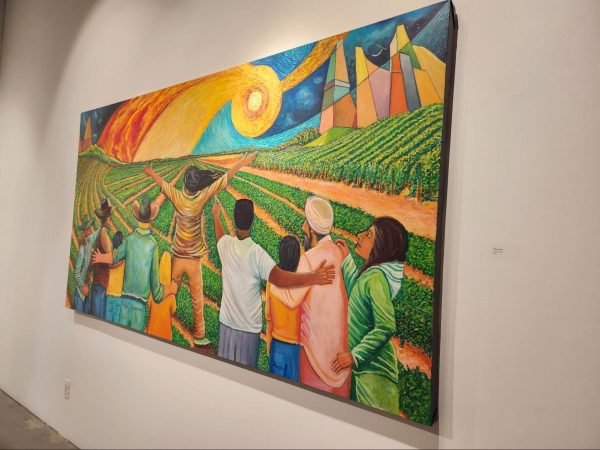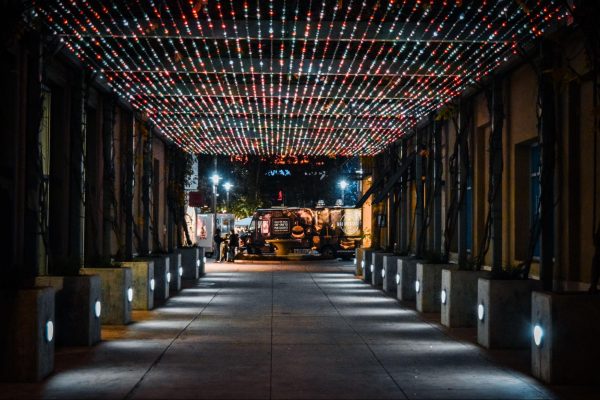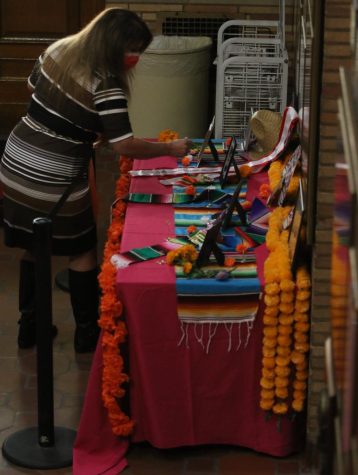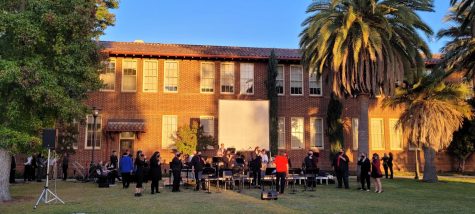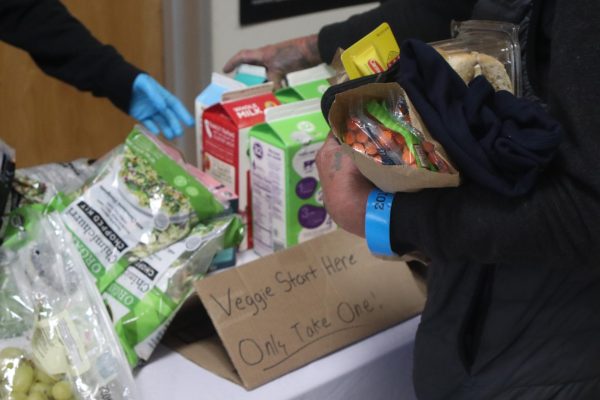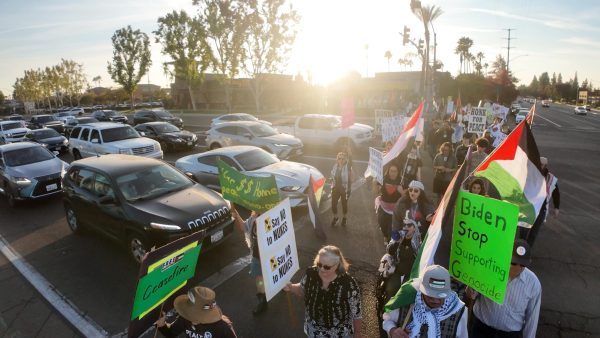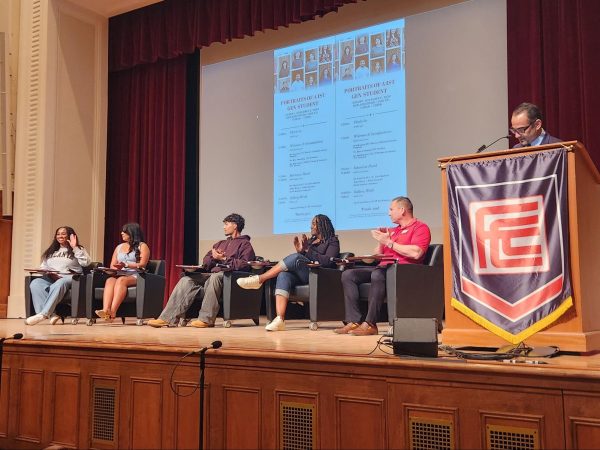Dr. Herrera Professor of Chicano and Latin American Studies Visits FCC
Photo by: Angel de Jesus Jr.
Dr. Cristina Herrera sits with reporter Tamika Rey to discuss the inner workings of her literary work, “CONTEMPORARY CHICANA LITERATURE: (Re)Writing the Maternal Script”, Friday, March 1, 2019.
Dr. Christina Herrera is making a difference within the Chicano community with the literary works she’s published such as, “Contemporary Chicana Literature: (Re) Writing the Maternal Script,” which explores the relationships between Chicana mothers and daughters.
Although lecturing is not really her style, Dr. Herrera will be at Fresno City College, in OAB 251 Thursday, March 7, 2019 at 12:30 p.m. M.e.ch.A de Fresno City College will be hosting the event called “ChicaNerds,” where she will let the conversation flow.
Dr. Herrera, along with Dr. Laura Alamillo and Dr. Larissa Mercado-Lopez, wrote “Voices of Resistance,” a novel on motherhood, maternity and the mother-daughter dyad. The novels touches on subjects that explore the traditional “silent/passive” model of behavior for Chicano mothers towards their daughters and how this type of parenting style can cause static within the relationship.
Published in late 2017, this work is a, “Collection of essays that examines very different representations of Chicano/Chicana children’s and young adult literature. So it’s different scholars in the field whether its education scholars who study Chicanx and Latinx children’s literature and then more traditional literary scholars,” Herrera said.
What sets this book apart from what is traditionally explored? Well, according to Herrera, it’s the first anthology that examines Chicana/o children’s literature first, in that regard, that makes it important.
When, “Addressing the fact that the field of Latinx literature hasn’t really focalized writings by authors who write solely for younger audiences,” Herrera said. “The other part of it is that the field of children’s and young adult literature tends to be very white and few scholars in the general field of children’s literature have examined works by writers of color especially Chicanx and Latinx writers,” Herrera said.
Herrera stressed the importance to get different perspectives. These literary works can be used by different scholars to study from.
When speaking of the virgin/whore binary, the first chapter examines how in Chicano Mexican culture and literature there’s a tendency to describe Chicano motherhood along this really limited spectrum of virgin or whore.
“And so we see it a lot in the image of Our Lady the Guadalupe, which is the Mexican Virgin Mary, where she is both a virgin and a mother which we know is possible. But then on the other hand there are other literary and mythic and historical figures in Mexican culture like La Llorona the weeping woman and La Malinche who’s the sort of considered the mother of Chicano culture they’ve been depicted as whores as the bad mothers,” Herrera said.
“And so what I’m arguing is that Chicana writers are sort of grappling with how motherhood had been very, very narrowly misunderstood as only virginal and whore. Like these nothing else and so writing by Chicano writers expand that representation to include much more genuine, authentic, realistic representations of mothers as human as real as possessing lots of different emotions,” Herrera continued.
This binary representation is seen in different types of cultures. “I think that in my book I look at how in discussions on Chicano motherhood, we see similarities in scholarship representation on Asian American mother, African American mothers and how both Asian American women and black women feminist writers have tried to challenge and contest how motherhood is represented in very, very limited terms,” Herrera said highlighting the commonalities.
Herrera explained to me how mothers of the Latinx culture are traditionally viewed. “I look at how Chicano writers are responding to not only the virgin-whore binary but also how they set the mother as silent the mother as passive but the mother as also someone who is very conservative and who holds her daughter back,” Herrera said.
“The mother daughter relationship even as its tense even as its frustrating it can be a source of empowerment and a sense of affirmation. That it doesn’t have to be as confining. It doesn’t have to be as problematic as stereotype and as myth would have us believe,” Herrera said.
“Most of my student are mostly women, mostly Chicano mostly Latina. So they come in with their own experiences and when we examine Chicano literature, poetry or even Chicana feminists writings or essays that talk about mothers I always invite my students to talk about their own relationships and much of what they say I talk about in the book,” said Herrera.
Herrera explained that there isn’t a single way to discuss the mother daughter relationship. “A lot of my students will talk about how fundamental that relationships is to their very core. But at the same time, as they talk about how much they love and admire and respect their mothers their also really frustrated,” Herrera said about her students.
Herrera mentioned how there is also a common divide experienced by many of her female students in regards to the way their mothers treat them as opposed to their brothers. These women don’t feel as valued or like their relationship takes the back seat.
“My students always have a lot to say about their mothers and I find that that’s a topic that most of my students really want to talk about because they’ve never had an avenue to express all of these different conflicting these feelings that they’ve had,” said Herrera.
She found that what they see is that, some of her students have express how their relationships with their mothers haven’t been not as affectionate whereas they say their mothers are really affectionate with their brothers.
Herrera mentioned how it pains these women and, “They want that affection, they want that physical closeness, that intimacy and sometimes they don’t get it. So there’s frustration with that, that you know, “my mom just doesn’t hug me but she hugs my brother,” or, “my mom is really hard on me, she’s not hard on my brother.””
Anything from immigration can be a factor in changing these relationships. There’s a lot of different factors.
“Usually what I see is my students talk about how their immigrant mothers are stricter when it comes to education. You know where their mothers really, really encourage them and tell them,” you need to go to school, I don’t want you to be like me. I don’t want you to work in the fields,” which I think is also troubling in a way,” she said.
“We talk about how that, while mothers are encouraging their daughters to go to school which is great yet at the same time the message of don’t be like me, you think it’s unfair that they see themselves that way but I also think that it shows how many of these mothers understand that how they as immigrant women, as women of color, as field workers, as just one example,” Herrera said.
These mothers realize that they are viewed as not being as successful and so they want more for their daughters and so part of what her students are struggling with is, “How do they go to school while also honoring their communities and not rejecting their communities,” she said.
“If we want to be successful we need to move away from our families from or communities. That the more we assimilate the more successful we’ll be and I think that that’s really, really problematic and it’s that what I work against in my research,” is the message received by these women Herrera said.
“I think what I try telling my students that even when I use words like the virgin/whore binary and dyad I try to describe in their everyday terms in everyday examples and so I look at how and I try to encourage my students to think about how we can see those limitations on womanhood, on women of color every day in everyday examples,” she said.
“When we think about the virgin/whore binary and we expand it, we think about how which types of mothers have generally historically speaking been considered good versus who has been considered or constructed as bad. And historically white mothers, no matter what they do, historically they have always been viewed as virginal, the best, the ideal. And everybody else is the opposite,” Herrera explained.
Herrera went on to explain the importance of realizing the consequences of how women of color are viewed by policy makers. “If we think that doesn’t actually have any consequences on our everyday life then we are fooling ourselves. Like in the 1990s for example the whole made up myth of the crack mother the welfare queen. That was in policy terms, that was exactly what they were saying, the virgin-whore binary: the black mothers are bad,” Herrera detailed.
She went further into her explanation, “There supposedly putting their kids in danger even though there was no evidence or research to prove that. So black mothers were constructed by the Bush administration as threats so we need to police you know drug use. We need to police all these things to make sure that we can control this population,” Herrera detailed.
“These concepts that I’m writing about are not just theoretical, they are real life consequences and we see that especially every single day. When we talk about the Latinx community for example, and we saw this especially in 2011, how undocumented mothers were called anchors,” Herrera said.
What are anchors you may ask? “Breeders of anchor babies– that was the expression to explain this idea that undocumented women were just crossing over the border to take advantage of US citizenship and that they were just birthing us children so that they could take advantage of the system. And so there were lawmakers that came up with the term anchor–baby,” Herrera explained.
“This is the idea of US born children are anchoring down their undocumented parents. And so that’s another example, and so this fear of immigrant mothers led to these really punitive laws that we saw in Alabama, in Arizona, and even today right?,” Herrera pointed out.
“The message of the threatening criminals on the border. That’s kind of an extension of what I was talking about, how we need to protect our children, code for ‘white children’, from certain populations, and in this case Latinx populations and in extension Latinx mothers, when we should protect everybody,” Herrera said.
Herrera was mostly inspired by the relationship her mother and grandmother had. “The book is not about them because it’s a work of theory but I was definitely influenced and I was influenced by the stories my mom would share with me,” Herrera said.
She explains that her grandma wasn’t always nice to her mom, so the question that she asks throughout the book is why? Why was it that her grandma wasn’t always loving? Why couldn’t she always show that toward her mom? But on the other hand her grandma was very loving toward her.
“I couldn’t understand, why if there is a woman here capable of affection, deep affection, but why couldn’t she show to her own daughter?… But I always talk to my students too about my relationships so they understand they are not alone in some of their struggles,” Herrera said.
“I see that a lot n Chicano literature, you know that question who am I? And that is why I embrace the identity of Chicana cause it a way to show you now I don’t need to choose rather or not I’m Mexican or rather I’m American, I get to be Chicana,” Herrera proudly said.
M.e.ch.A. meets every Tuesday at 2 p.m. in SO 110.
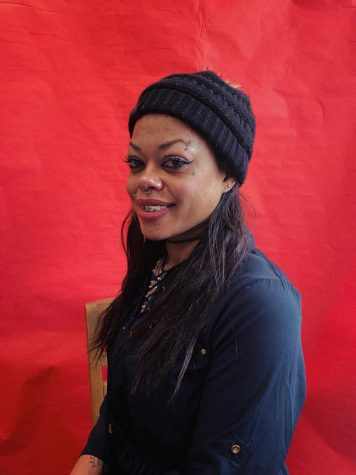
Tamika Angie Rey is a 32-year-old second year college student who is striving to become a professional journalist. She is currently majoring in journalism...

